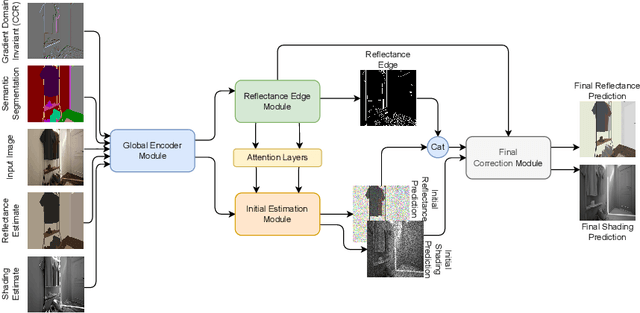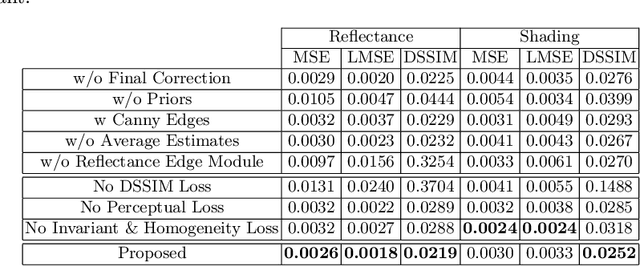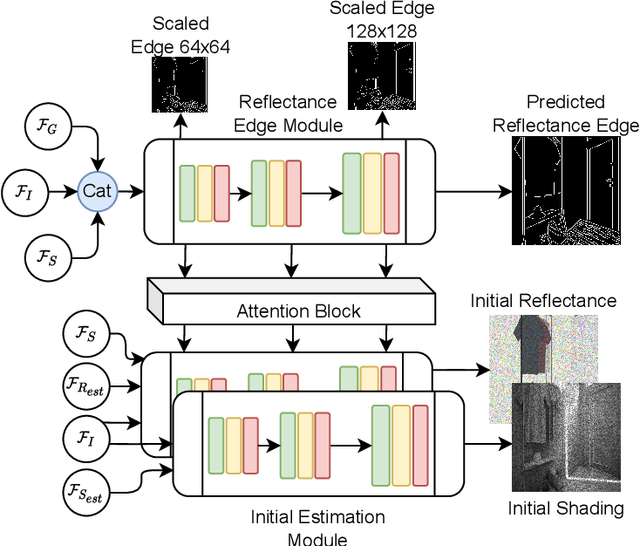SIGNet: Intrinsic Image Decomposition by a Semantic and Invariant Gradient Driven Network for Indoor Scenes
Paper and Code
Aug 30, 2022



Intrinsic image decomposition (IID) is an under-constrained problem. Therefore, traditional approaches use hand crafted priors to constrain the problem. However, these constraints are limited when coping with complex scenes. Deep learning-based approaches learn these constraints implicitly through the data, but they often suffer from dataset biases (due to not being able to include all possible imaging conditions). In this paper, a combination of the two is proposed. Component specific priors like semantics and invariant features are exploited to obtain semantically and physically plausible reflectance transitions. These transitions are used to steer a progressive CNN with implicit homogeneity constraints to decompose reflectance and shading maps. An ablation study is conducted showing that the use of the proposed priors and progressive CNN increase the IID performance. State of the art performance on both our proposed dataset and the standard real-world IIW dataset shows the effectiveness of the proposed method. Code is made available at https://github.com/Morpheus3000/SIGNet
 Add to Chrome
Add to Chrome Add to Firefox
Add to Firefox Add to Edge
Add to Edge